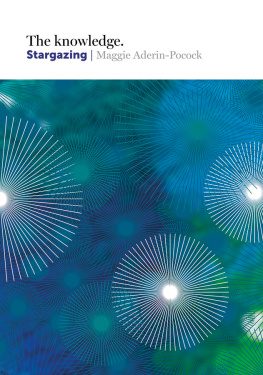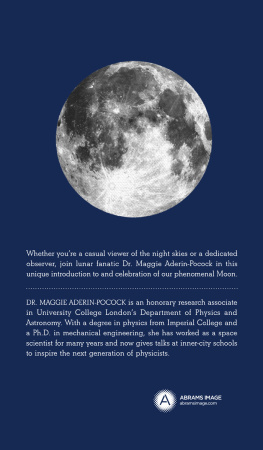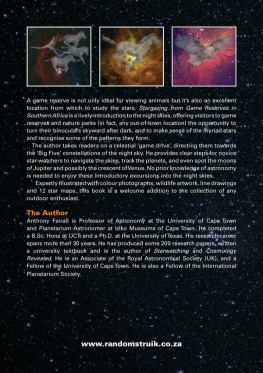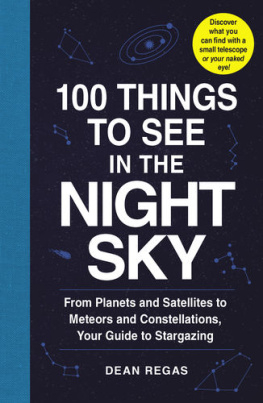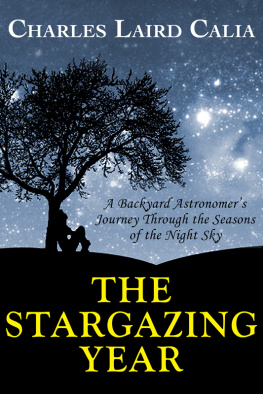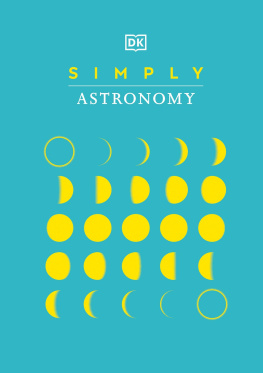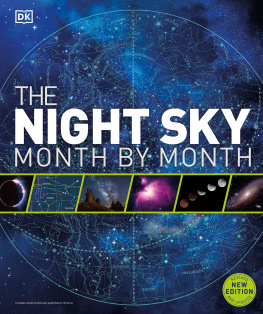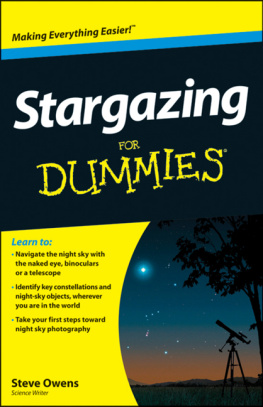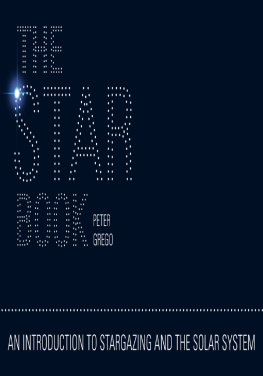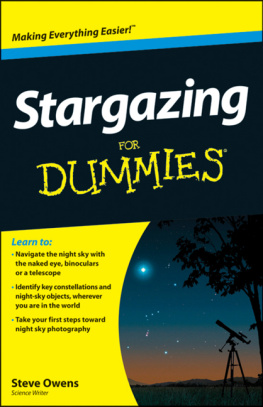I dedicate this, my first book, to the most important people in my life Lori and Martin. Thank you both for your love, support and encouragement.
Publishing consultant Jane OShea
Editor Romilly Morgan
Creative director Helen Lewis
Art direction & design Claire Peters
Illustrator Claire Peters
Production Vincent Smith, Tom Moore
First published in 2015 by
Quadrille Publishing
www.quadrille.co.uk
Quadrille is an imprint of Hardie Grant.
www.hardiegrant.com.au
Text 2015 Maggie Aderin-Pocock
Design and layout 2015
Quadrille Publishing
Moon through 2015 Sky and Telescope
)
The rights of the author have been asserted.
All rights reserved. No part of this book may be reproduced, stored in a retrieval system or transmitted in any form or by any means, electronic, electrostatic, magnetic tape, mechanical, photocopying, recording or otherwise, without the prior permission in writing of the publisher.
Cataloguing in Publication Data: a catalogue record for this book is available from the British Library.
eISBN 978 14949 694 0
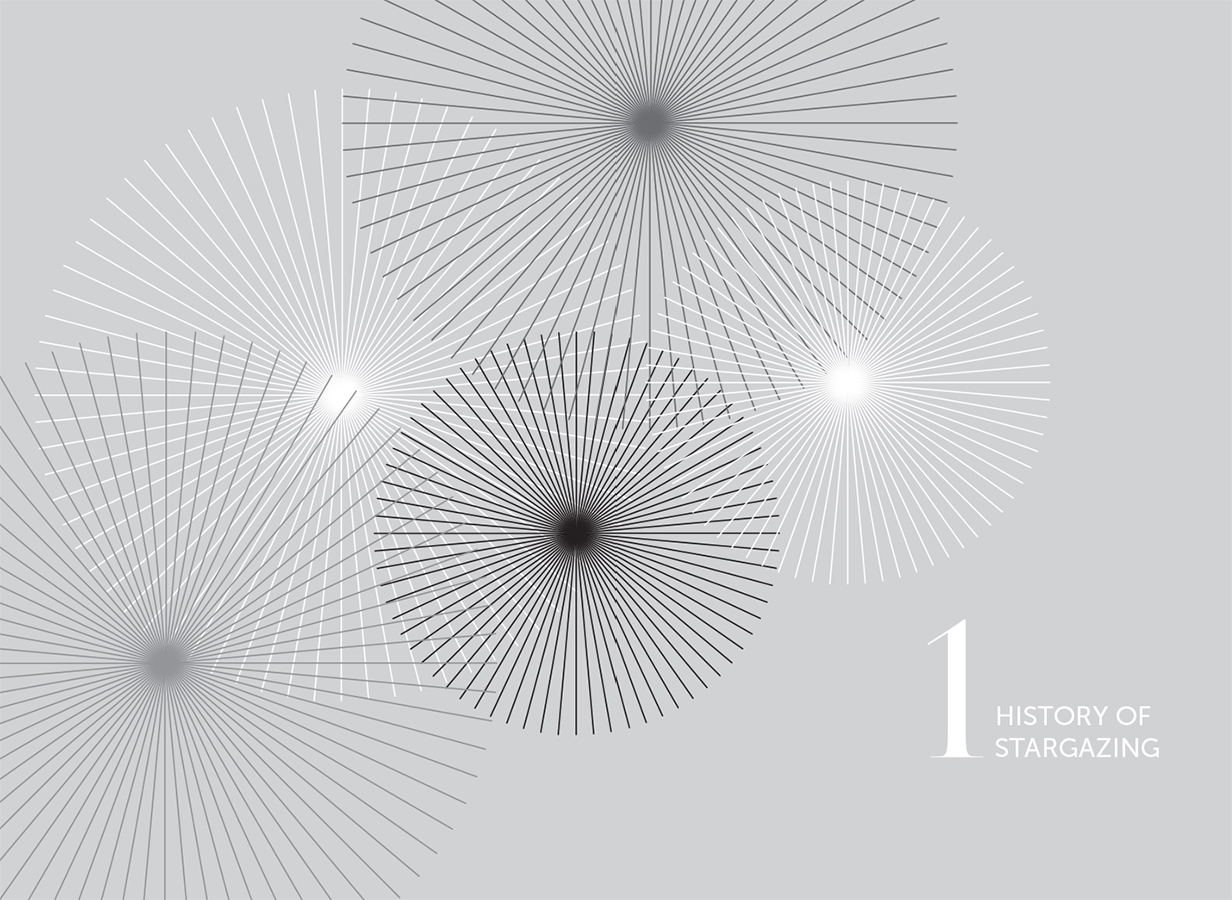
Astronomy is, to my mind, the oldest science by far. I think that this is because it is so accessible, and great inroads in our understanding of the universe have been achieved just by using our eyes.
A concise definition of astronomy is, The branch of science which deals with celestial objects, space, and the physical universe as a whole. But I like to summarise it as the study of all things not of this Earth, which covers pretty much the whole of the universe.
My favourite quote on the subject comes from Plato, who said, It is clear to everyone that astronomy at all events compels the soul to look upwards, and draws it from the things of this world to the other. To me this sums up the joy of astronomy and the sheer visceral delight that can be gained by the simple act of looking up. That accessibility continues today, for modern astronomy is one of the few areas of science where the amateur can make a real contribution to the subject. With so many astronomers, professionals and amateurs alike, actively watching the skies from many different viewpoints across the world, it can be the amateur enthusiast who notices an event first and then alerts the professionals to observe it with their larger telescopes.
Oxford English Dictionary definition
ARCHAEOASTRONOMY
In recent years I have become interested in the subject of archaeoastronomy, which is the study of the astronomy of ancient cultures. What really strikes me about the subject is the fact that nearly every culture has had an interest in astronomy. Spanning time and distance, it would seem that most ancient peoples looked up and formed ideas about what they could see.
Much of the astronomy conducted by the ancients was fuelled by a desire to understand the gods better, to help with navigation to obtain more accurate timekeeping, and by a strong wish to predict the future. Some cultures give us insight into their astronomical past through the records they kept, while for other cultures, such as the Australian Aboriginals, who pass their knowledge and histories by word of mouth, our understanding has come through the work of anthropologists. The Australian Aboriginals have a rich history of stargazing, but rather than naming constellations just from the stars visible in the night sky, they also incorporated dark shadow clouds of dust and gas (nebulae) in our galaxy, the Milky Way, to form a constellation they call the Emu in the Sky.
Some of the earliest astronomical records date back to the 4th century BC when the Chinese recorded and named many stars. By 750 BC the Babylonians had created the first almanacs detailing the movements of the Sun, Moon and planets for astrological purposes.
ANCIENT GREECE
Although some early Greek astronomers, such as Aristarchus of Samos (c. 310c.230 BC), posited the idea of a heliocentric system in which the Sun is at the centre and the Earth and planets revolve around it, by 140 AD the influential ancient astronomer Claudius Ptolemy (c. 90c.168 AD) had firmly positioned himself in the Earth-centred camp. His treatise on astronomy, the Almagest, describes his geocentric (Earth-centred) model of the cosmos, known as the Ptolemaic system, and includes his own catalogue of the stars, complete with 48 constellations. The geocentric model seemed irrefutable at the time. People could see the evidence for this idea with their own eyes. The Sun rose in the east and set in the west as it journeyed around the Earth, and the stars appeared to travel around the Earth too it all seemed to make sense. But there were a few dissenters: people who looked at the heavens closely and noticed that there were objects that did not move like the other bodies. They called these wandering stars the seven visible planets in our solar system as their motion through the night sky seemed a little erratic.
The Almagest was to be a huge influence on astronomers and their thinking for over a thousand years until the early Renaissance, when Copernicus formulated his heliocentric theory of the .
STARGAZING IN INDIA
Interestingly, while Europe was still thinking of the Earth as the centre of the universe, in 499 AD the Indian mathematician and astronomer Aryabhata was considering the idea of the heliocentric solar system, where the planets spin on their axis and follow elliptical orbits around the Sun. He also describes how the Earth rotates about its axis, causing day and night, and also orbits the Sun in a yearly cycle. He calculated that the Earths diameter was 13,383km (8,316 miles) todays measurement is 12,742km (7,917 miles) and this measurement remained the most accurate approximation for over a thousand years.
WESTERN DEVELOPMENTS IN ASTRONOMY
In Europe it took the calculations of Polish astronomer Nicolaus Copernicus (14731543) in the 16th century to move away from the Ptolemaic system. His close astronomical observations strongly suggested a heliocentric model of the universe; with this knowledge, the wandering stars now made sense they were planets like the Earth, orbiting the Sun.
Around this period the telescope was invented, not by Galileo, but by a Dutch optician called Hans Lippershey (15701619). Although Lippershey applied for a patent for his invention, it is thought that it was not granted because many similar devices were around at the time.
The flamboyant Danish nobleman Tycho Brahe (1546-1601) lived a rather colourful life but made very detailed measurements of the stars, planets and comets. Although Brahe did not subscribe to the Copernican view of the universe, the measurements that he took were later used by astronomers such as Johannes Kepler (1571-1630) to work out his three laws of planetary motion. The main one of these indicated that planets travelled around the sun in ellipses rather than circles, with the Sun sitting at one focus of the ellipse. These laws of motion are still used by scientists today.
Galileo Galilei (15641642), one of the greatest scientific minds of the Renaissance period, was the first person to use a telescope to observe celestial objects. He made a number of the devices, ranging in magnification from x3 to x30 as he improved the design. With them he was able to observe the craters of the moon, see the rings of Saturn and observe the moons of Jupiter. He also discovered that Venus exhibited phases similar to those of the Moon. This turned out to be a giant leap for astronomy as now the heavens could be viewed in more detail than ever before.

